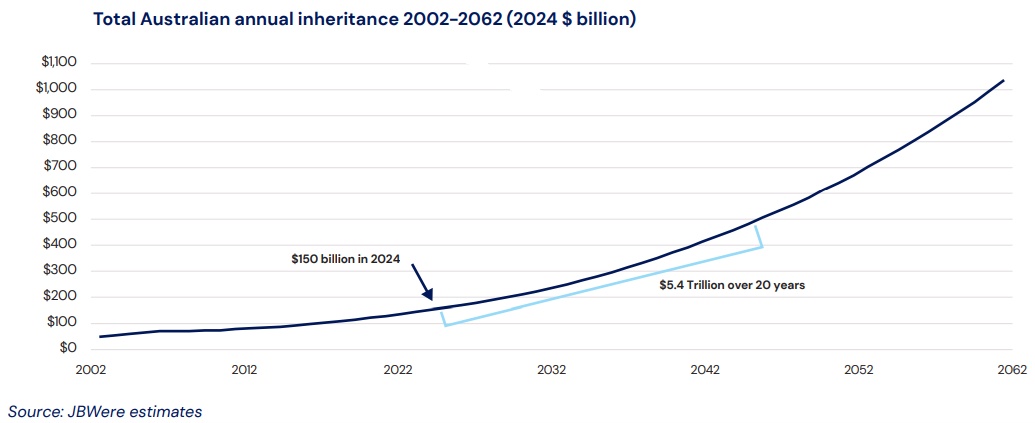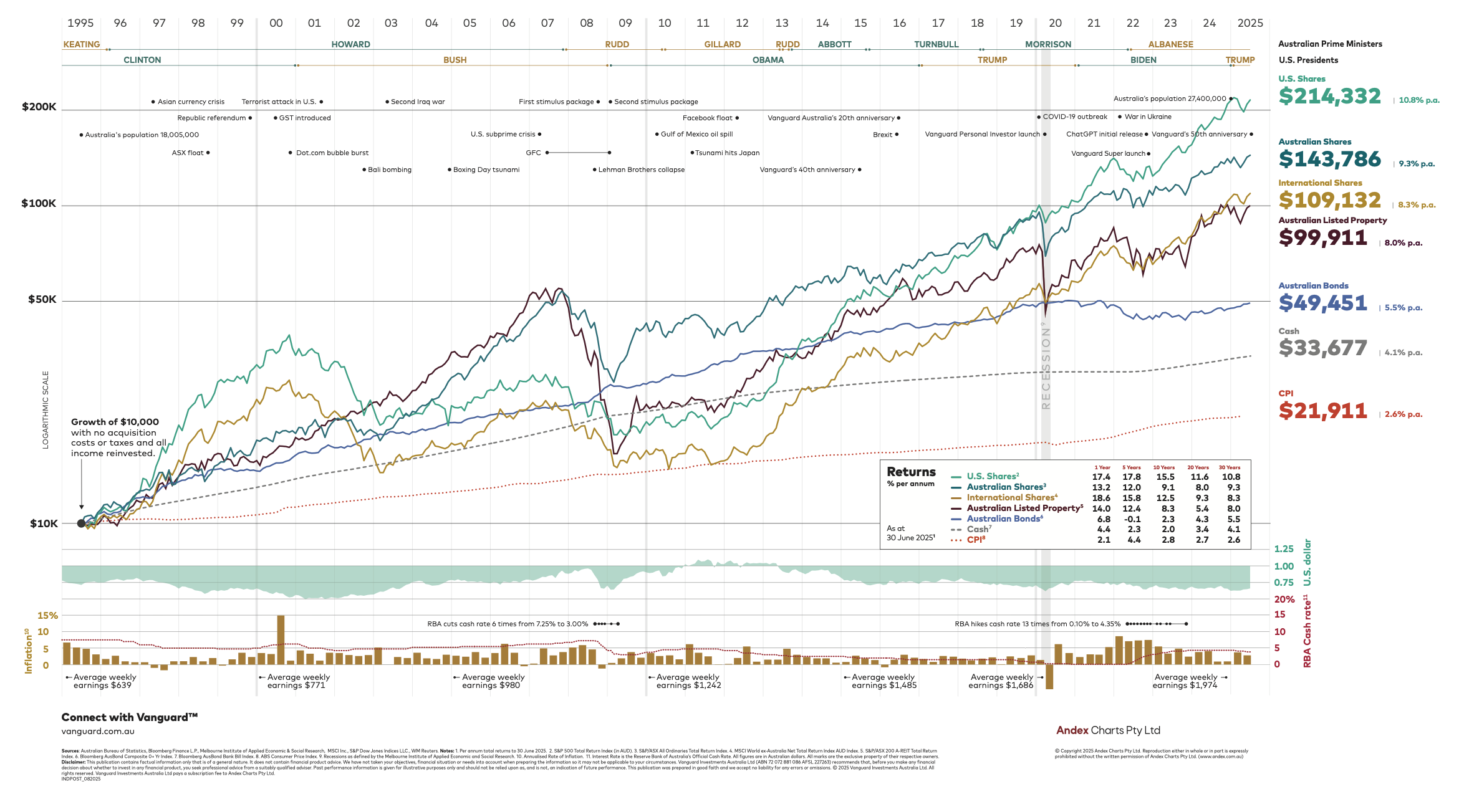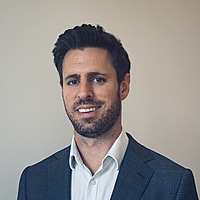How to invest when you're under 40
Aspirational Australians in their 20s and 30s currently find themselves in a strange position.
At a time in life where things, including finances, should be starting to fall into place, competing priorities and uncertainty have muddied the waters in new ways.
Many in this age group will find themselves with bigger bank balances and close to reaching peak earnings potential, but bogged down by more responsibilities and more expenses, especially if children are in the picture.
As a demographic, they're also in line to be the biggest beneficiaries of the $5.4 trillion "inheritocracy" - a result of Australia's generational wealth gap - but that can't be relied on as a wealth-building strategy for today.

They also find themselves at a time when the old way of doing things no longer bears the same fruit. As Callum Newell, financial adviser at Fox and Hare, says, saving for and paying off a house is no longer a viable wealth-building strategy like it was for previous generations.
So, how should someone in this period of their life approach investing?
Getting the balance right
It's true of any age demographic, but is arguably more true for this group than any other - there isn't a one-size-fits-all approach to investing for those in the 25-40 year old bracket.
As Newell suggests, buying a house will be a big preoccupation for many, but even that is about balancing short-term decisions with long-term goals.
"Property starts to become the focus point for most people," says Newell. "The challenge here is then to ensure that the deposit for the purchase isn’t invested in risky assets, but at the same time, long-term investment goals aren’t compromised."
Just buying a house is no longer enough for those looking to get ahead, and shouldn't come at the expense of other prospects. "Whilst this may have worked 30 years ago, the length of time for this style strategy now represents a significant portion of your life where your money isn’t compounding," says Newell.
"With life expectancy pushing 90, increased study times pushing out career start dates and a push towards not wanting to work past 60, a key challenge is to make 35 years of salary pay for 70 years of adult life. Having your wealth in savings for a deposit or an offset account makes this difficult."
Trish Gregory, financial adviser at Hayes & Co, suggests that reality means you need to be actively growing your wealth, not resting on your laurels.
"It's actually not about that first hundred dollars or thousand dollars, it's about the accumulation of money over time. That makes the biggest difference," says Gregory. "And it can be really hard for the younger generation to see that because they look at it and they say, 'a thousand dollars is getting me nothing these days'.
"But by investing and then reinvesting the dividends, you're actually getting that beautiful compounding growth. The alternative is not doing that and never getting further in life financially."

Maximising other opportunities
Another big consideration is making the most of any favourable incentives or tax treatments that may be available to you.
"Tax considerations become a priority," says Newell. "So not only do we need to ensure regular investments continue in their busy lives, but to make sure they’re structured correctly. Sometimes this means using an investment bond, particularly if both members of the couple are in the top tax bracket and they would like to allocate some funds towards their kids’ education."
"There are some options out there that can provide early access to funds for education whilst still being tax efficient," says Newell. "These structures can also act as a bridge between reducing work hours and accessing super. They also are very flexible in terms of estate planning and the underlying investments they invest in."
Voluntary super contributions may also become a serious consideration, especially if you feel your super balance is on the lower side or your income is on the higher side. You may also want to consider a high-growth super portfolio if you haven't already.
"Unless you have a specific reason," says Gregory, "you can generally go quite risky with your superannuation. You're not touching that until you're at least 60."
For those with a mortgage, debt recycling is also worth considering, says Newell.
"Debt recycling regularly comes up in discussions, too, particularly for those who need clarity between paying down the mortgage versus investing. Converting non-deductible debt to deductible debt not only saves thousands in tax, it also means money can be invested in the market earlier, so you are not delaying the compounding effect by waiting until the mortgage is cleared."
Constructing an investment portfolio
For those unsure where to start or looking for a solid portfolio foundation, both Newell and Gregory recommend using a broad, index-based investing strategy.
"Given the long investment timeframe we see in this age group, most of the portfolio should be made up of growth assets," says Newell. "There is significant research on the active vs index approach to investing, both may have their uses in different portfolios; however, I find the transparent, low cost and tax efficiency of index-based investing works best for most portfolios catered to younger members. Yes, there may be increased volatility; however, as discussed above, the combination of regular investment and timeframe will help combat this."
But it's important to still look further afield for opportunities. Gregory says there's a tendency for some investors to get preoccupied with fees and other relatively minor considerations instead of the bigger picture.
"I know a lot of people think, 'should I buy A200 versus VAS versus some other Australian shares because one's 0.7% fees and one's 0.75% fees'," she says. "But I don't see that as the biggest mover of wealth. It's actually more about what the ideal portfolio breakdown is. How much risk can you take? The more risk you can take means the longer you have until you need to touch the money and the more return you get over time."
Newell agrees and says investors should even look beyond the typical Australian and US equities when building a portfolio.
"As a young investor, I’d be looking for increased diversification within these growth assets," says Newell. "So whilst the regular Australian and International shares combination may make up the majority of a portfolio, I’d also consider a smaller emerging markets allocation to ensure growth can be captured prior to any of these particular companies within this area transitioning into the larger cap space of the global indexes."
"In addition to this, property and infrastructure may have had a tough time over recent years; however, the longer income timeframes of these types of assets can help smooth returns within the overall portfolio and can almost act as a bit of defensive buffer whilst still contributing to growth over the long term. Again, it’s important not to just look at recent returns of the past 10 years or so for asset classes."
How various asset classes have performed over the last 30 years

Ultimately, it's about getting the long-term balance right, says Gregory.
"When people are thinking about what to invest in, the key things to look at are how much risk you're willing to take, which means how many defensive or safe assets versus how many growth or risky assets."
"If you've got more than a seven-year time horizon, you can actually go quite risky with 70% growth assets," Gregory said. "You just have to be willing to ride it up and down and be consistent with putting money in it in the meantime."
But it's equally important to apply prudence and not chase returns when building your portfolio. "I've seen some things in the private credit market at the moment that are offering between eight and 25% guaranteed returns, which is insane." said Gregory.
Finally, it's a matter of consistently reviewing your portfolio and making changes as necessary over time. It means you can stay on top of your investment strategy and also potentially improve your returns, according to Newell.
"Regular rebalancing of the portfolio also ensures you do not get drift in your asset allocation, it has also shown to improve risk-adjusted return over time. Reviewing this quarterly would be a good start and if you’re conscious of realising capital gains there could be an option of using new money to invest into underweight investments."
The key takeaway
While creating an investing strategy that works for the long-term will vary from person to person, there's one that is non-negotiable for any investor, regardless of age - consistency.
"It is very easy to setup an investment account and place some initial trades, however infrequent, once-off investments will not compound effectively over time," says Newell. "I regularly review new members existing investment portfolios and a key theme I see is a flurry of investments placed over a month or two, then nothing for 12 months."
As for any investor, consistency is the key driver for success, says Gregory.
"Most young people, the biggest winner is low cost index funds and the consistent behaviour will get you further. I think people forget how simple it can be."
4 topics

